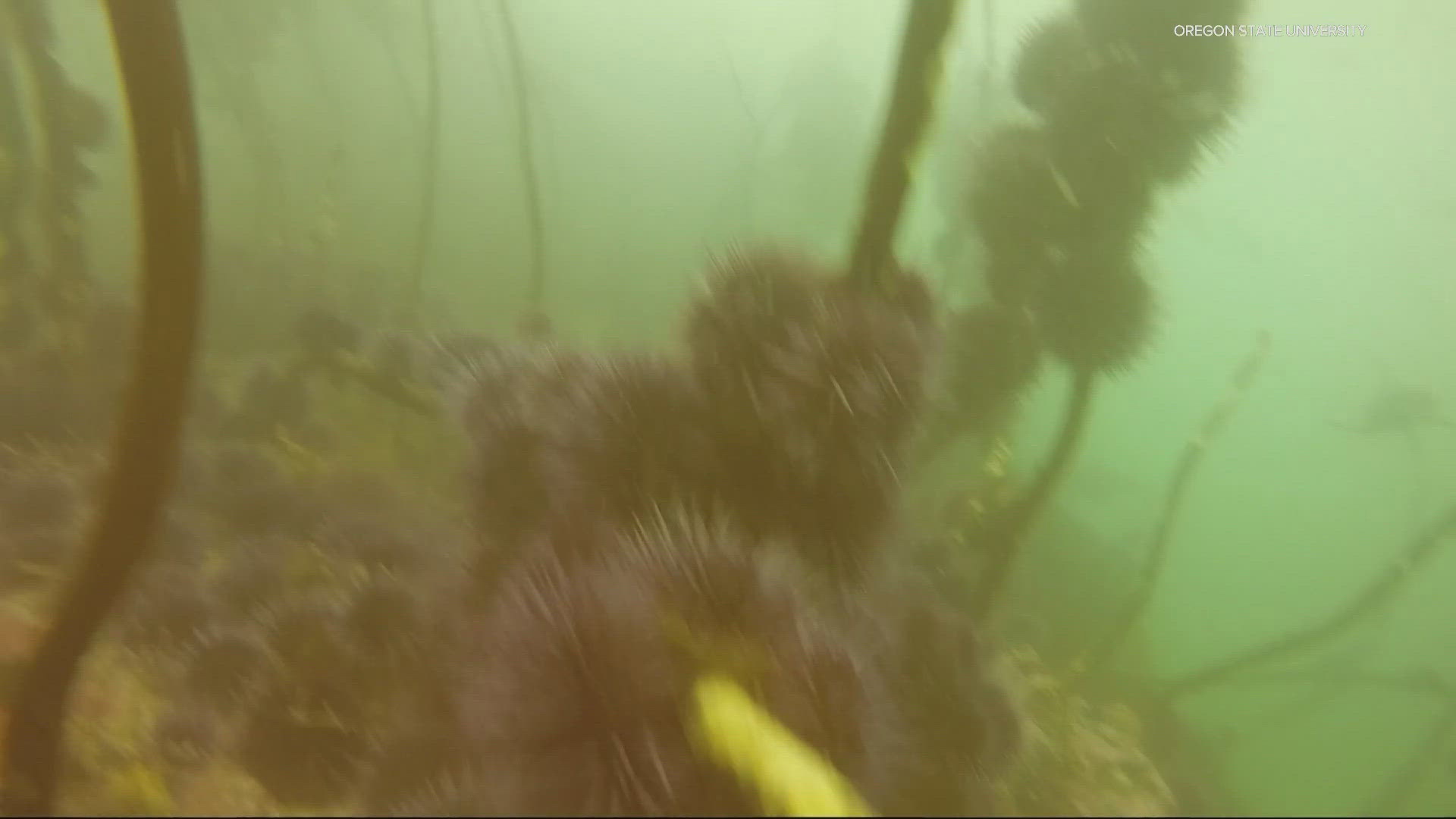CORVALLIS, Ore. — New research from Oregon State University (OSU) offers some insight into the factors behind the growing population of sea urchins along the Oregon coast, as well as a note of caution about how the change is impacting other species in the surrounding marine environment — most notably gray whales.
The sea urchin population is growing because sea stars, a longtime urchin predator, have been dying off over the past decade, according to OSU researcher and doctoral candidate Lisa Hildebrand. The decline dates back to 2013, when the mysterious sea star wasting syndrome decimated Oregon's population of sunflower sea stars, leaving them nearly extinct locally.
Without the sea stars to go after them, the sea urchin population has increased steadily. Sea urchins eat kelp, and their growing numbers have the potential to devour kelp forests off the coast — which in turn can indirectly impact gray whales, according to Hildebrand.
"What we see is this indirect impact of these urchins increasing, which has caused the kelp to decline, along with warming water and climate change," said Hildebrand.
The speculation is that a decline in kelp could also be leading to a decline in populations of the zooplankton and mysid shrimp that make up a big part of the gray whale species' diet, although Hildebrand said researchers are still working to determine the exact nature of that link.
But the impact is clearly visible; with fewer zooplankton to feed off of, whales spend less time foraging in parts of the ocean with kelp forests.
The negative impacts aren't being felt all over the coast, Hildebrand said, but researchers did see the impact among whales along the southern Oregon coast near Port Orford, where the study has been taking place.

